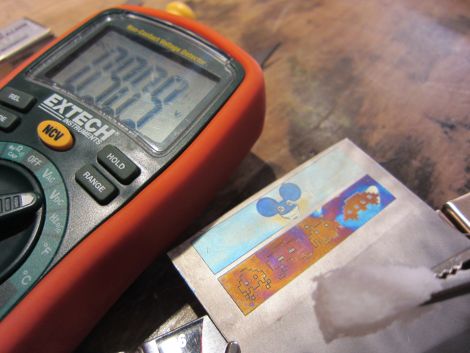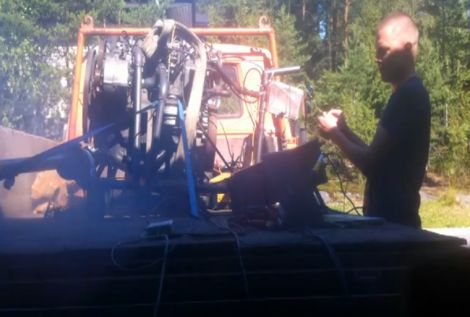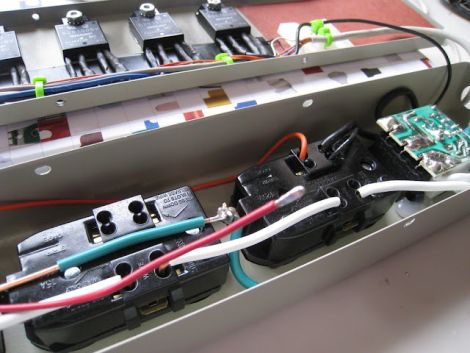
[POTUS31] had a need for anodized titanium, but the tried and true “submersion” method was not going to work out well for what he was trying to do. In order to create the look he wanted he had to get creative with some tape, a laser cutter, Coke, and a whole lot of 9v batteries.
His Ring-A-Day project has him creating customized rings based on reader feedback, and lately the requests have had him searching for a good way to color metal. Anodizing titanium was a sure bet, though creating detailed coloring on a small medium is not an easy task.
[POTUS31] figured that he could gradually anodize different areas of the ring by using laser-cut tape masks, allowing him to selectively oxidize different portions of his creations as he went along. Using the phosphoric acid prevalent in Coke as his oxidizing agent along with a constantly growing daisy-chain of 9-volt batteries, he had a firm grasp on the technique in no time. As you can see in the picture above, the anodizing works quite well, producing vivid colors on the titanium bands without the need for any sort of dye.
[POTUS31’s] favorite color thus far? A rich green that comes from oxidizing the metal at you guessed it – 99 volts.
[via Make]
















